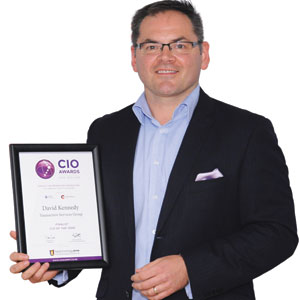THANK YOU FOR SUBSCRIBING
Editor's Pick (1 - 4 of 8)

The 4 Horsemen Of Smart City Solutions-Efficiency, Security, Sustainability, Community
Joe Keen Poon, Group CTO & MD (Smart City Solutions), Surbana Jurong


Joe Keen Poon, Group CTO & MD (Smart City Solutions), Surbana Jurong
Infrastructure Monitoring and Management
When it comes to planning and managing the built environment, the all too common refrain from municipalities, developers, real estate owners, and land equity investors is “Why did the planners not design out or plan for adequate provisions at the onset?” There is a need to plan with the end—communities and businesses living and interacting in the area—in mind.
Efficiency- Getting the best bang for the taxpayers’ buck
Timely reporting and monitoring of municipal services is the last mile to ensuring a city-no matter how elegantly built. This last mile is crucial for maximizing the potential of the communities living and business operating there and therefore maximizing the return of the taxpayers who ultimately fund the city.
Smart Security before anything else
Ever since the Blitzkrieg, security master planning and operations have been integral to running cities. This continues to be important but in itself, insufficient. On a harsh Ukrainian winter day of December 23, 2015, amid a tense geopolitical climate, an attack of the BlackEnergy malware knocked out Ukraine’s power grid, leaving more than 200,000 people without power. This was a rude wakeup call to city officials that cyber security as crucial to the smooth running of the city as physical security is.
Sustainability- thinking long term
A city is not a flash in the pan; generations, not just people, live, work and play in cities. Whilst environmental, societal, economic factors, just to name a few, present complex challenges for us all, can we have our cake and eat it too when it comes to city living?
How energy is shaped, throughout the entire value chain starting from statutory regulation, market policy, generation, transport as well as end use, underwrites the basic notion of sustainability. Issues such as how does a city encourage more renewable sources of energy while dealing with issues of intermittency, control not just the generation of energy but also shape energy consumption, capture waste energy industriously without creating unwieldy interdependencies and ensure a reliable supply of energy without over-burdening the infrastructure are facets of a smart city.
Community engagement- harness the innovation of the community and beyond
Reinforcing his earlier message in New York, Pope Francis continued, this time in Nairobi in December 2015, “There is a need to promote projects of city planning and maintenance of public areas which move in this direction and take into consideration the views of local residents; this will help to eliminate the many instances of inequality and pockets of urban poverty…” As the world flattens with increasing information connectivity and population mobility, cities have to compete for talents and also critical mass to keep vibrant and viable. Communities and businesses are increasingly expected to be involved in the planning of the cityscape and its operations. They will demand that their feedback on the state of the city to be heard and looked into.
This is a good development. Cities are never static. Systems and infrastructure have to change with the needs of the people in order to stay relevant.
Humanity is moving into uncharted waters with the speed and scale of urbanization. We are reaching a fork road where one path leads to unforetold opportunities and the other unmitigated disaster for the world and our species. We believe that the combination of proper urban planning and technology will help us stay on the right path.
Weekly Brief
I agree We use cookies on this website to enhance your user experience. By clicking any link on this page you are giving your consent for us to set cookies. More info
Read Also













